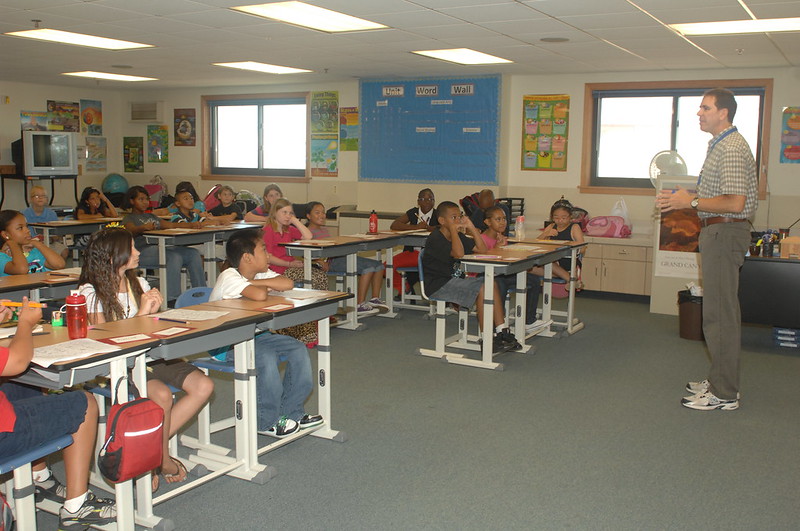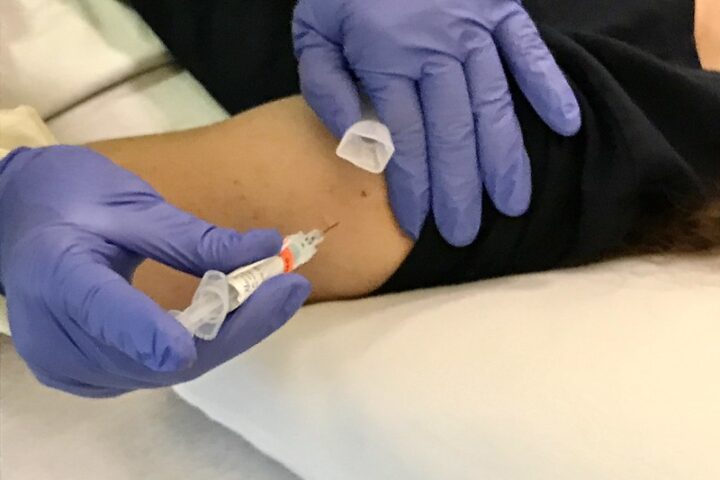The latest results from the National Assessment of Educational Progress (NAEP), commonly known as “The Nation’s Report Card,” reveal concerning trends in U.S. student achievement, with continued declines in reading skills alongside limited progress in mathematics.
Reading Crisis Deepens Across Grade Levels
Average reading scores declined by 2 points for both 4th and 8th grade students between 2022 and 2024, according to data released January 29, 2025. This drop compounds the previous 3-point decline observed between 2019 and 2022, indicating a troubling trend that began before the COVID-19 pandemic.
“The continued declines in reading scores are particularly troubling,” said Governing Board member Patrick Kelly, who teaches AP U.S. Government and Politics. “Reading is foundational to all subjects, and failure to read well keeps students from accessing information and building knowledge across content areas.”
The data show fewer than one-third of students nationwide are performing at the NAEP Proficient level in reading at both grade levels. About 40% of 4th graders are working below the NAEP Basic level—the largest percentage since 2002—meaning they likely cannot recognize implied reasons for character actions in stories. Approximately one-third of 8th graders fail to reach the NAEP Basic benchmark—the largest percentage ever recorded.
Math Performance Shows Limited Improvement
The average math score increased by 2 points nationally in 4th grade compared to 2022. Thirteen states, the District of Columbia, Puerto Rico, and 14 Trial Urban District Assessment (TUDA) districts saw improvements in 4th grade math. Notable gains occurred in Alabama, Delaware, Louisiana, Maryland, and Massachusetts, among others.
However, 8th grade math scores remained flat compared to 2022—particularly concerning given the historic 8-point drop observed in 2022. No state or TUDA district made gains in 8th grade math in 2024.
In 4th grade math, nearly 40% of students perform at NAEP Proficient or Advanced levels, but nearly a quarter don’t reach NAEP Basic, meaning they likely cannot identify odd numbers or solve problems using unit conversions. Among 8th graders, only about 26% perform at or above Proficient level in math, while nearly 40% work below NAEP Basic, indicating they likely cannot use similarity to find the length of a triangle side.
No Complete Pandemic Recovery
Nearly five years after the COVID-19 pandemic began, U.S. student achievement remains below 2019 pre-pandemic levels across both subjects and grade levels. Only two states have surpassed their pre-pandemic scores in a single grade and subject: Louisiana in 4th grade reading and Alabama in 4th grade math.
“This is unacceptable especially for our lowest performing students,” said former North Carolina Gov. Beverly Perdue, who chairs the National Assessment Governing Board. “We need to invest more in the data-informed efforts that have been shown to work so that we lift up our students and accelerate their learning even further.”
Widening Achievement Gaps
Current reading scores for both grades approximate levels seen in the early 1990s. Math scores, while higher than the 1990s, remain significantly lower than their 2013 peak.
The data reveal a troubling widening of performance gaps. Across grades and subjects, recent declines were generally driven by lower-performing rather than higher-performing students. Today, the lowest-performing students score about 100 points below the highest-performing students.
Similar Posts
“This growing achievement gap between high- and low-performing students is troubling,” said Martin West, Vice Chair of the Governing Board and professor of education at Harvard University. “We made progress in closing this gap until around 2010, but it’s been steadily widening since. Policymakers at all levels of government must understand and work to reverse this trend.”
State Spotlight: Maryland’s Educational Challenges
Maryland exemplifies the complex relationship between funding and outcomes. Despite education spending increasing nearly 50% from $7.7 billion in 2017 to $11.4 billion in 2024, student performance metrics like SAT scores have declined. Maryland’s average SAT score dropped from 1072 in 2022 to 1000 in 2024—now below the national average of 1024.
In the Baltimore region, almost every school system has seen SAT scores fall compared to 2017, with Baltimore City’s average at 867—the lowest in the region. Only Howard County bucked this trend with a 50-point increase.
Educational advocate Corey DeAngelis suggests that increased funding alone isn’t sufficient: “Maryland is falling further and further behind. It doesn’t surprise me all that much that the outcomes aren’t getting any better with substantial increases in funding.”
Contributing Factors and Potential Solutions
Experts point to multiple factors contributing to these trends:
- Pre-pandemic issues: Michael Petrilli, president of the Thomas B. Fordham Institute, notes that “test scores started to decline before the pandemic. They reached their peak… sometime in the early 2010s, and then started a slow decline.”
- Technology impact: Donald Bolger, professor at the University of Maryland, suggests ubiquitous technology use affects learning: “It’s not the screen use in the classroom, per se. It’s more the screen use that’s happening at homes.” He adds that reading from paper has “been shown to be beneficial.”
- Curriculum challenges: Former teacher Antoynica Ryan points to frequent curriculum changes and excessive testing: “It’s a really harsh test culture. Test, test, test. So there’s not a lot of teaching and learning actually taking place because the students are constantly being assessed.”
- Chronic absenteeism: While improving, student attendance has not returned to pre-pandemic levels. In Baltimore City, chronic absenteeism remains around 49%.
Some promising approaches have emerged. Maryland’s implementation of “science of reading” approaches appears to be having positive effects on 4th grade reading scores. The state is also revising its math curriculum to integrate algebra, geometry, and statistics in early high school years.

The NAEP data and expert analyses underscore the urgent need for targeted interventions that address the widening achievement gaps, with particular focus on early literacy, attendance improvement, and instructional quality enhancements that can benefit all students—especially those performing at the lowest levels.
Reading scores have declined significantly. Both 4th and 8th grade students saw a 2-point decline between 2022 and 2024, following a previous 3-point drop between 2019 and 2022. Currently, fewer than one-third of students nationwide are performing at the NAEP Proficient level in reading. About 40% of 4th graders and one-third of 8th graders are working below the NAEP Basic level, representing a concerning downward trend that began even before the COVID-19 pandemic.
Math performance shows limited improvement. The average math score increased by 2 points nationally in 4th grade compared to 2022, with gains in 13 states, DC, Puerto Rico, and 14 urban districts. However, 8th grade math scores remained flat compared to 2022, which is particularly concerning given the historic 8-point drop observed in 2022. No state or urban district made gains in 8th grade math in 2024. Nearly five years after the pandemic began, math scores remain below 2019 pre-pandemic levels.
Achievement gaps are widening significantly. Across grades and subjects, recent declines were generally driven by lower-performing rather than higher-performing students. Today, the lowest-performing students score about 100 points below the highest-performing students. According to Martin West, Vice Chair of the Governing Board and professor at Harvard University, “We made progress in closing this gap until around 2010, but it’s been steadily widening since.” This growing disparity requires urgent attention from policymakers at all levels.
The relationship between funding and outcomes is complex. Maryland provides an example where, despite education spending increasing nearly 50% from $7.7 billion in 2017 to $11.4 billion in 2024, student performance metrics like SAT scores have declined. Maryland’s average SAT score dropped from 1072 in 2022 to 1000 in 2024—falling below the national average. Educational advocate Corey DeAngelis suggests that increased funding alone isn’t sufficient: “Maryland is falling further and further behind. It doesn’t surprise me all that much that the outcomes aren’t getting any better with substantial increases in funding.”
Multiple factors appear to be contributing to these trends:
- Pre-pandemic issues: Test scores started declining in the early 2010s, before the pandemic
- Technology impact: Increased screen use at home may be affecting learning
- Curriculum challenges: Frequent curriculum changes and excessive testing culture
- Chronic absenteeism: Student attendance has not returned to pre-pandemic levels
Some promising approaches have emerged from the data:
- Implementation of “science of reading” approaches appears to be having positive effects on 4th grade reading scores in some states
- Curriculum revisions that integrate math subjects (algebra, geometry, statistics) in early high school years
- Targeted interventions that address widening achievement gaps
- Focused efforts on improving early literacy
- Programs to improve attendance and reduce chronic absenteeism
- Instructional quality enhancements that benefit all students—especially those performing at the lowest levels

















